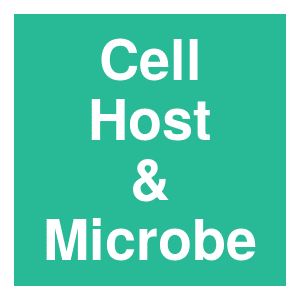
Keywords: horizontal transfer

|
Living in the endosymbiotic world of Wolbachia: A centennial reviewR. Kaur, J. D. Shropshire, K. L. Cross, B. Leigh, A. J. Mansueto, V. Stewart, S. R. Bordenstein and S. R. Bordenstein, Cell Host and Microbe, 29:879-893. 2021.
The most widespread intracellular bacteria in the animal kingdom are maternally inherited endosymbionts of the genus Wolbachia. Their prevalence in arthropods and nematodes worldwide and stunning arsenal of parasitic and mutualistic adaptations make these bacteria a biological ... Keywords: cre recombinase, DNA, drosophila-melanogaster, endonuclease genes, Evolution, gene drive evolution, gene drive models, gene drive natural, gene drive synthetic, history 2000-present, Homing, homing endonuclease, homologous recombination, horizontal transfer, intron, mechanisms, population eradication, population genetic engineering, protein, vector-borne diseases |

|
Evolution of divergent DNA recognition specificities in VDE homing endonucleases from two yeast speciesPosey, KLK, V.; Burt, A.; Gimble, F. S., Nucleic Acids Research, 32:3947-3956. 2004.
Homing endonuclease genes (HEGs) are mobile DNA elements that are thought to confer no benefit to their host. They encode site-specific DNA endonucleases that perpetuate the element within a species population by homing and disseminate it between species by horizontal transfer. ... Keywords: cre recombinase, DNA, drosophila-melanogaster, endonuclease genes, Evolution, gene drive evolution, gene drive models, gene drive natural, gene drive synthetic, history 2000-present, Homing, homing endonuclease, homologous recombination, horizontal transfer, intron, mechanisms, population eradication, population genetic engineering, protein, vector-borne diseases |

|
Homing endonuclease genes: the rise and fall and rise again of a selfish elementBurt, AK, V., Current Opinion in Genetics & Development, 14:609-615. 2004.
Homing endonuclease genes (HEGs) are selfish genetic elements that spread by first cleaving chromosomes that do not contain them and then getting copied across to the broken chromosome as a byproduct of the repair process. The success of this strategy will depend on the ... Keywords: cre recombinase, DNA, drosophila-melanogaster, endonuclease genes, Evolution, gene drive evolution, gene drive models, gene drive natural, gene drive synthetic, history 2000-present, Homing, homing endonuclease, homologous recombination, horizontal transfer, intron, mechanisms, population eradication, population genetic engineering, protein, vector-borne diseases |

|
Site-specific selfish genes as tools for the control and genetic engineering of natural populationsBurt, A, Proceedings of the Royal Society B-Biological Sciences, 270:921-928. 2003.
Site-specific selfish genes exploit host functions to copy themselves into a defined target DNA sequence, and include homing endonuclease genes, group II introns and some LINE-like transposable elements. If such genes can be engineered to target new host sequences, then they can ... Keywords: cre recombinase, DNA, drosophila-melanogaster, endonuclease genes, Evolution, gene drive evolution, gene drive models, gene drive natural, gene drive synthetic, history 2000-present, Homing, homing endonuclease, homologous recombination, horizontal transfer, intron, mechanisms, population eradication, population genetic engineering, protein, vector-borne diseases |

Contact
David O’Brochta
Foundation for the
National Institutes of Health
geneconvenevi@fnih.org
RSS

